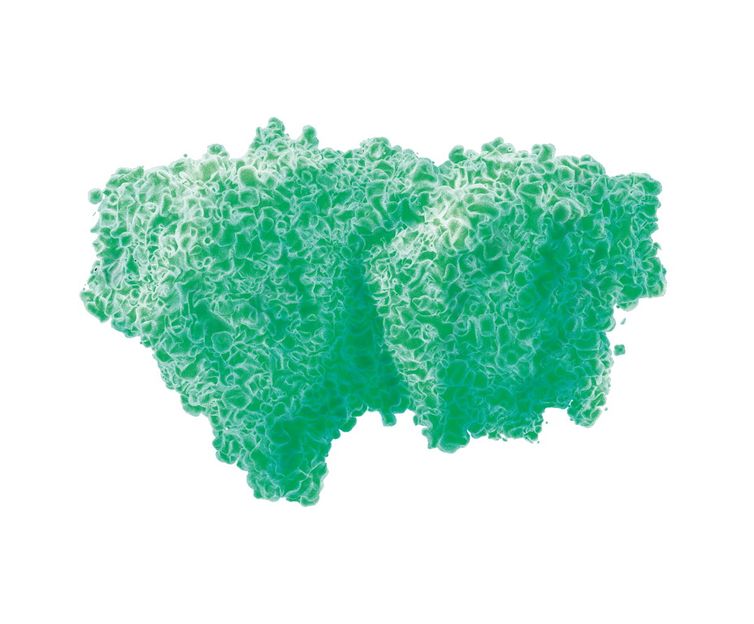Prestigious grant for imaging single molecules
Human Frontier Science Program supports intercontinental collaboration
An international team of researchers, including DESY scientist Henry Chapman, has been awarded a research grant by the Human Frontier Science Program to develop a novel method for imaging individual biomolecules with atomic resolution. The team will receive a total of 1.35 million US-Dollars over a period of three years. The collaboration includes Ned Seeman from New York University (USA), Rick Millane from the University of Canterbury (New Zealand), Trevor Forsyth from Keele University in the UK (seconded to the Institut Laue-Langevin in Grenoble, France) and Chapman.

Example for the structure of an important biomolecule, here solved from snall crystals: the Photosystem-II dimer is part of the photosynthesis machinery.
DESY
The intercontinental collaboration is addressing the challenge of imaging single macromolecules with X-ray free-electron lasers (XFELs). These devices, driven by powerful particle accelerators, produce incredibly bright and short pulses of X-rays that can reveal the spatial structure of molecules with atomic resolution. Currently, this sort of investigation requires scientists to crystallise the molecules first. The tiny crystals diffract the X-rays, and from that diffraction pattern the molecule's structure can be calculated.
However, growing crystals from biomolecules –especially those of particular interest to science –is often a painstaking process and sometimes not possible at all. A method to image biological macromolecules without having to crystallise them would be a significant advance to the field. The team aims to engineer samples in a general way to make it easier to measure diffraction signals from them, and to interpret the signals. To this end, an extra structure will be added to each molecule that can act as a holographic reference to correctly interpret and combine diffraction data from many such particles.
The collaboration brings together essential expertise: Seeman is a pioneer of nanotechnology using DNA molecules, Millane is the world expert in phasing diffraction data ranging from crystallography to coherent imaging and fibre diffraction in between. Forsyth is an expert on neutron and X-ray fibre diffraction and on obtaining structures from structured biological systems and in the biology and biochemistry of various systems including amyloids. Chapman, who was recently awarded the Röntgen Medal, is an X-ray laser pioneer who has developed many methods and techniques that have become standards at XFEL facilities worldwide. His aim is to extend beyond current limits of research with free-electron lasers.
The Human Frontier Science Program aims to promote intercontinental collaboration and training in cutting-edge, interdisciplinary research focused on the life sciences. Out of this year's 1073 proposals, only 30 projects were chosen for a grant. “This funding scheme brings together a truly remarkable diversity of places and ideas, and we’re really lucky to have this chance,” emphasises Chapman, who is also a professor at the University of Hamburg and a member of the Hamburg Centre for Ultrafast Imaging and the Center for Free-Electron Laser Science.
The international Human Frontier Science Program Organization (HFSPO) is based in Strasbourg, France, and receives financial support from the governments or research councils of Australia, Canada, France, Germany, India, Italy, Japan, Republic of Korea, New Zealand, Norway, Singapore, Switzerland, the UK, the USA, as well as from the European Union.
Topics
Organizations
Other news from the department science

Get the analytics and lab tech industry in your inbox
By submitting this form you agree that LUMITOS AG will send you the newsletter(s) selected above by email. Your data will not be passed on to third parties. Your data will be stored and processed in accordance with our data protection regulations. LUMITOS may contact you by email for the purpose of advertising or market and opinion surveys. You can revoke your consent at any time without giving reasons to LUMITOS AG, Ernst-Augustin-Str. 2, 12489 Berlin, Germany or by e-mail at revoke@lumitos.com with effect for the future. In addition, each email contains a link to unsubscribe from the corresponding newsletter.

























































